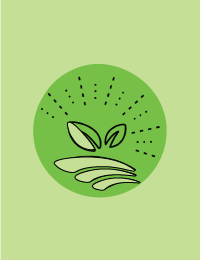To explain this model, a general overview of the vegetable market is needed, in particular the trends in the tomato market. The tomato market is characterized by a sharp seasonality, which directly affects the price of this product and depends on the following factors:
• Most of the tomatoes are grown in the Shida Kartli and Kvemo Kartli regions of Georgia in the open field;
• Early and late tomatoes are mainly grown in so-called “cold” greenhouses (no heating) in the subtropical regions of Georgia, in the municipalities of Kvemo Imereti (Kutaisi and Samtredia) and Kakheti (Lagodekhi). The existing production is small and cannot fully meet the demand;
• Georgian off-season tomatoes mainly compete with tomatoes grown without heating in neighboring countries (mainly in Turkey), which are imported into Georgia on the basis of a preferential customs regime. Greenhouse tomato production in Turkey is large-scale and also subsidized, the climate is warmer than in Georgia and therefore the imported product is very competitive with local products.
Georgian tomato production, as a rule, lags behind imported ones by a month. It ripens when the prices are falling. Usually, during the period of mass ripening of local tomatoes, imports are stopped due to high transport and logistics costs. The following factors should also be considered:
• As a rule, the mass release of tomatoes to the local market in Georgia begins in July;
• At the beginning of tomato harvesting, the selling price is reduced by 2-3 times;
• Tomatoes are harvested until October when temperatures begin to decrease.
In the farm of Leri Tsitsagi, a small farmer in Gori municipality, was introduced a production method that would help increase production during periods of relatively high market prices. Like almost every small Georgian farmer, Leri Tsitsagi had a serious financial deficit to achieve this goal. In addition, climatic conditions were a serious challenge – the danger of a sharp drop of air temperature in early spring – due to the location in the foothill zone and the flow of cold air from the valley during this period.
In this situation, the following decision was made:
• Arrangement of 100 m2 greenhouse;
• Production of tomato seedlings in cassettes in a greenhouse farm;
• Organize seedling cultivation in such a way that almost fully-grown plants can be moved to open ground as soon as the danger of a drop in temperature disappears.
After this, the example of the climate-smart model had the following form:
• Using 80% of the greenhouse area, 37,000 seedlings could be grown in a 100 m2 greenhouse with a single-tier cassette layout;
• Seedling growth period was 25-30 days ahead of traditional growth period;
• Plants transplanted into the ground ripened 20-25 days earlier than plants planted in the traditional way.
This model gave the following economic effect:
• Growing period increased by 25%, which increased the yield by about 20%;
• the ripening period of 20% of the additional harvest coincided with the period when the selling price (due to the peculiarities of the year) was 140% higher than the seasonal price;
• With a one-time small investment, this model brought farmers 32% more annual income.
![]()
